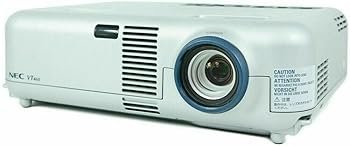Barend Ray
Active member
In a world where we often settle for the convenience of screens, the NEC VT460 Video Projector challenges the notion of how we consume visuals. With its lightweight design and impressive brightness of up to 1,500 ANSI lumens, this projector promises to deliver clarity even in less-than-ideal lighting conditions. But does it really hold up against modern expectations for portability and performance?
The 64-step image magnification feature is intriguing, suggesting that you can focus on the finer details of your content, but we have to ask: is this a gimmick, or does it enhance the viewing experience? And while the automatic keystone correction and various mounting options offer flexibility, are they enough to justify this projector's place in a market dominated by high-definition displays?
Join me as we dive into the capabilities of the NEC VT460, weighing its practical benefits against the realities of our evolving digital landscape. Can this projector truly redefine how we present and share visual content, or is it just another device vying for attention in a crowded tech space? Let’s find out.
I'm considering the NEC VT460 Video Projector and would love to hear your thoughts on it. I've read that it has a resolution range from VGA to UXGA, which sounds versatile, but how does that translate into actual picture quality? I'm particularly interested in how bright the images are, especially in various lighting conditions—1,500 ANSI lumens seems decent, but is it really bright enough for a larger room?
Also, sound quality is another concern of mine. Does it have built-in speakers that are adequate for presentations, or will I need to invest in external audio?
I appreciate that it's lightweight and has versatile mounting options, which is great for portability. However, are there any downsides that I should be aware of? How does the automatic keystone correction perform in real-world scenarios? Any insights would be greatly appreciated!
The 64-step image magnification feature is intriguing, suggesting that you can focus on the finer details of your content, but we have to ask: is this a gimmick, or does it enhance the viewing experience? And while the automatic keystone correction and various mounting options offer flexibility, are they enough to justify this projector's place in a market dominated by high-definition displays?
Join me as we dive into the capabilities of the NEC VT460, weighing its practical benefits against the realities of our evolving digital landscape. Can this projector truly redefine how we present and share visual content, or is it just another device vying for attention in a crowded tech space? Let’s find out.
Spec
| Parameter | NEC VT460 Video Projector |
|---|---|
Picture | |
Reference Price | |
Highlight | Lightweight, portable projector, with VGA through UXGA resolution Up to 1,500 ANSI lumens for bright images in any setting 64-step image magnification lets you zoom in on specific image areas Versatile mounting options let you present from anywhere, at nearly any distance Automatic keystone correction, manual zoom and focus |
Screen Size | N/A - 25 Feet |
Contrast Ratio | 400:1 |
Maximum Resolution | 1600 x 1200 |
Native Resolution | 1600 x 1200 |
Brightness | 1500 lumen |
Display Type | LCD |
Controller Type | Button Control |
Connectivity Technology | VGA |
Hardware Connectivity | VGA |
Compatible Devices | Laptop, Gaming Console, Smartphone, Speaker |
Other Features | speakers |
Item Weight | 13 Pounds |
Also, sound quality is another concern of mine. Does it have built-in speakers that are adequate for presentations, or will I need to invest in external audio?
I appreciate that it's lightweight and has versatile mounting options, which is great for portability. However, are there any downsides that I should be aware of? How does the automatic keystone correction perform in real-world scenarios? Any insights would be greatly appreciated!




